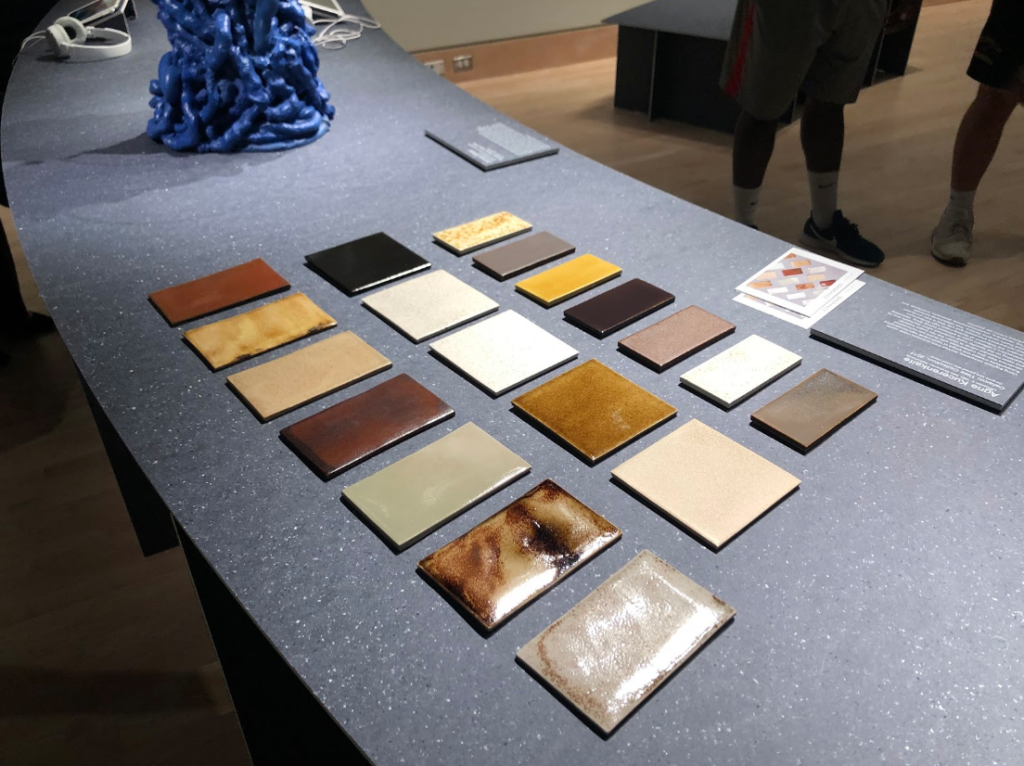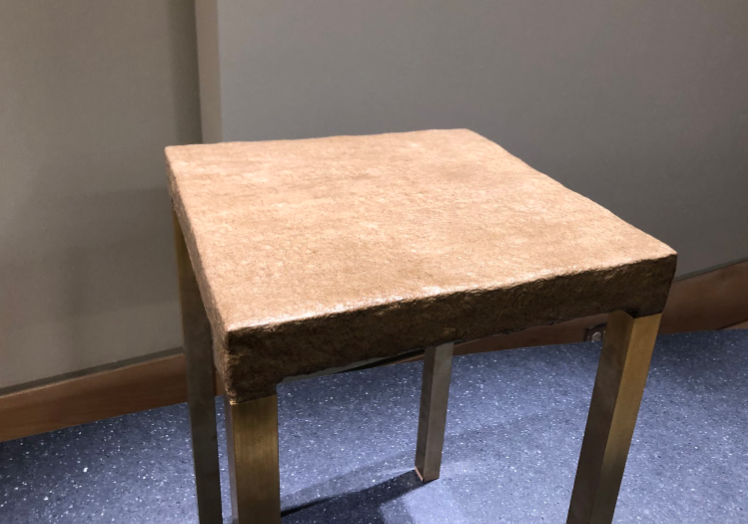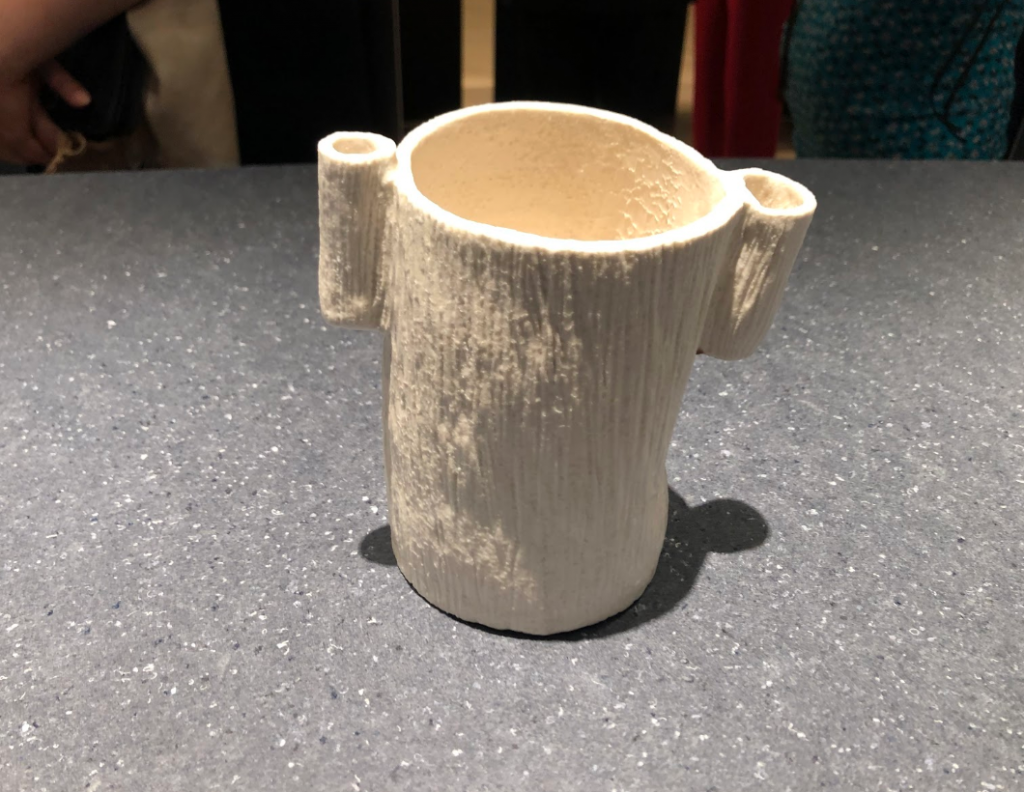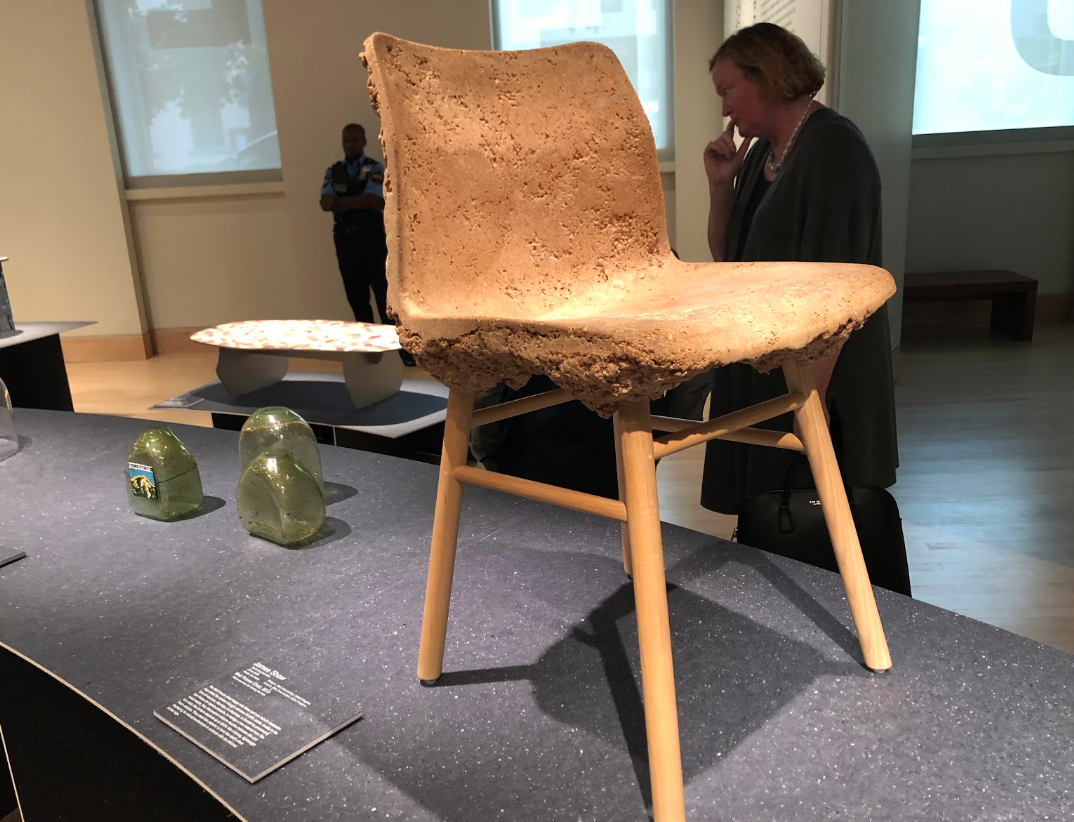
Designer Agne Kucerenkaite creates ceramic tiles glazed with industrial metal waste.
Georgetown’s Maria and Alberto de la Cruz Art Gallery unveiled a new exhibition, Design Transfigured/Waste Reimagined, on Oct. 2. The exhibition, curated by the firm CuratorSquared, explores the ways in which waste materials can be used for functional purposes. The exhibition presented a cup molded from food waste, purses made from byproducts of coconut farming, a table made from used toilet paper, and a ceramic vessel glazed with distilled human urine, among other pieces.
Though the pieces of the exhibition range from fashion to furniture to foodware, each is made from a waste material. It’s encouraging us to think about waste in a different type of way,” said Samantha Marques, the exhibitions manager for Georgetown art galleries. “[The designers] are all repurposing waste materials or what would ultimately end up in landfills to make functional objects.”
The exhibition seeks to reconcile the world of high design with the pressing need to reduce our environmental impact. Luxury design often demands rare and high-impact materials, like tropical woods. But these designers create visually stunning furniture out of materials like corn husks and recycled newspaper, challenging the idea that luxury and elegance are synonymous with rarity.
Nienke Hoogvliet, a designer based in the Netherlands, was commissioned by a Dutch municipal water authority to develop a use for bioplastics derived from sewage waste. She eventually settled on a design for a biodegradable cremation urn to help solve the problem of soil and water pollution at burial and ash-scattering sites.
“The ashes release slowly into nature, and then the soil can process the nutrients and the toxins at its own pace,” Hoogvliet said.

James Shaw and Marjan van Aubel, designers based in the U.K., developed a new material by mixing lumber waste with bioresin.
Though she has experimented with only animal ashes thus far, she hopes to apply the design to human ashes soon.
In addition, Hoogvliet worked with the water authority to find a use for used toilet paper. The treatment plant skimmed off toilet paper, which were already broken down into cellulose fibers, washed them, and made them into a usable pulp. She then pressed the pulp into a small table.
Part of her mission, she said, is to slowly bring people around to the idea of using materials like used toilet paper for everyday items. “It’s good to slowly get people used to the idea that we can use dirty material like this again and give it new life,” she said.
Agne Kucerenkaite, a designer from the Netherlands, presented ceramic tiles glazed with industrial metal waste.

Sinae Kim, a designer based in South Korea, created a ceramic glaze from distilled human urine.
The problem with traditional ceramic making, according to Kucerenkaite, is that the glazes and pigments typically derive from untraceable and potentially problematic metals, like iron, cobalt, and copper. “From which mine? China? Holland? You actually cannot get that information,” she said.
But by sourcing those products from industrial plants that would otherwise discard them, she can reduce the design industry’s demand for problematic materials.
Her goal is to contribute to a more circular local economy, where one industry’s waste is another’s raw material, and vice versa. This notion challenges the idea that there is such a thing as waste.
If a landfill-bound material has some hidden potential, as these designers sought to prove, “you cannot actually call it waste,” Kucerenkaite said.





